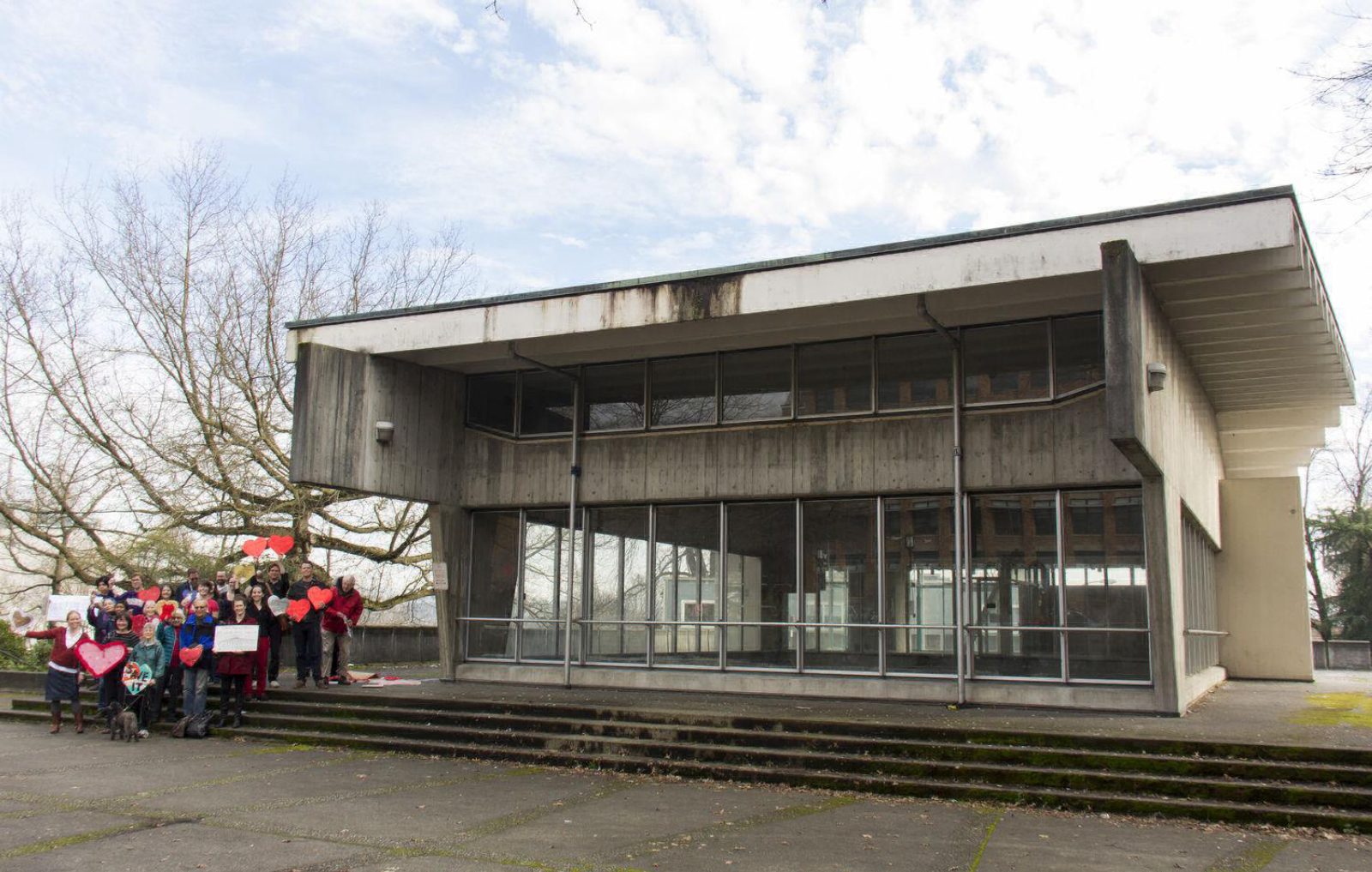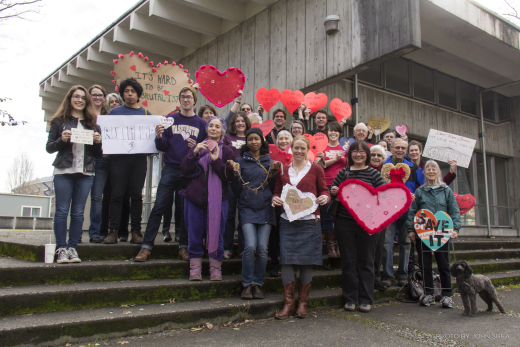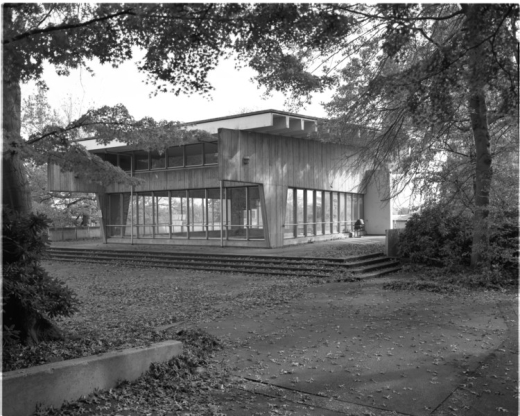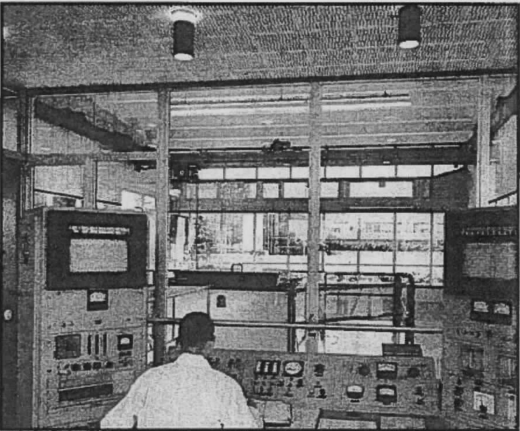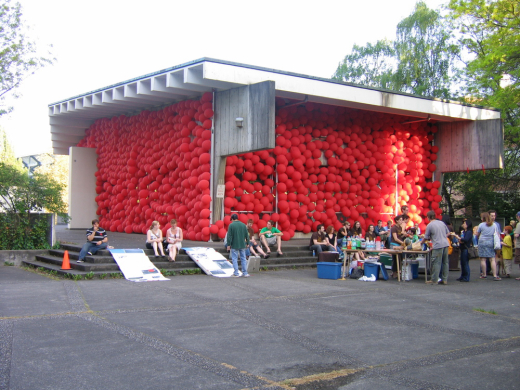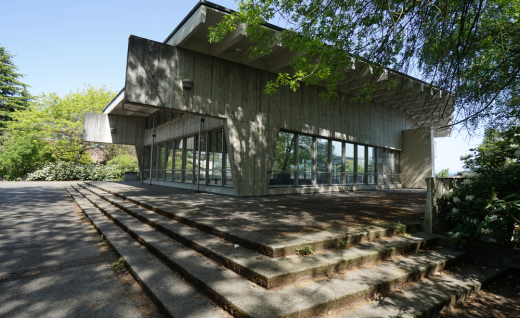The Nuclear Reactor Building was completed in 1961, the year before the Century 21 Exposition opened in Seattle. The building is small, but its dynamic form embodies the forward-looking spirit of its time. The architecture of the building is clear and logical, an expression of structure in concrete. Glass fills the space between the structural elements, allowing visual access to the reactor on the level below. The structural assembly showcases concrete in its different roles, especially evident in the cast in place members that support the roof. There is a kinetic energy in the form of the building that speaks of the energy contained within.
The Nuclear Reactor Building was unable to escape the downfall of nuclear power. A combination of negative attitudes and a lack of demand for nuclear engineers led to a decline in enrollment in the Nuclear Engineering Program. Research in the Nuclear Reactor Building was limited throughout the 1980s, and eventually the reactor was decommissioned in 1988. The Nuclear Engineering Program was closed in 1992. Since that time the building has stood vacant. The building has stood frozen in the past for the last 25 years.
Property Significance
The Nuclear Reactor Building is an exceptional example of design from the Modern Movement and the ideals that drove it. Designed by renowned architects of the time, the building’s design promotes technology and rejects the conventional academic architecture surrounding it. It is a completely unique structure, and represents a specific time and way of thinking in the history of the University, and the overarching history of nuclear power. Even after standing empty for many years, the structure still speaks of the heroic aspirations of Modern architecture and its association with technological development and moving ever forward into the future.
Advocacy Efforts
Preservation advocacy can be a long haul effort. The fight to save the Nuclear Reactor Building is one of these efforts. In 2008, the University of Washington had plans to demolish the Nuclear Reactor Building that summer. At the time, there were no specific plans or donors for the site. It was and remains a desirable site for future development. Due to the economic recession, the UW did not proceed with demolition and redevelopment of the site.
The Nuclear Reactor building was listed in the Washington Heritage Register and National Register of Historic Places in 2008 (nominated by Abby Inpanbutr, a graduate of the master's program in architecture at the University of Washington Architecture). The structure was 47 years old at the time of listing. The National Park Service deemed it had achieved significance within the past 50 years and was of exceptional importance.
In November of 2014, University of Washington representatives informed preservation advocates and local/state government officials that it has plans to build a new Computer Science & Engineering building (CSE II) and that the preferred site is where the Nuclear Reactor Building is located. It was clear to advocates that this meant the building was once again, threatened.
On February 13, 2015, about 25 supporters of the preservation of the Nuclear Reactor Building gathered in front of the structure for a group photo holding homemade Valentines showing their love of the historic building. This "heart bomb" event brought together Docomomo US-WEWA, Historic Seattle, Washington Trust for Historic Preservation, students, faculty, staff and others.
